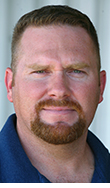Trailer built at design lab to aid software tests in drone-assisted roof damage assessments

Christopher Paulk
A trailer, custom-built at Texas A&M’s [Automated Fabrication & Design Lab] (http://fablab.arch.tamu.edu) , is helping an insurance company test software used to evaluate storm-damaged roofs from a drone-mounted camera.
The 30-foot-long, 10-foot-tall trailer, built at the Riverside campus lab, by Christopher Paulk, AFDL manager, and four student employees, has 10 frames supporting interchangeable roof surfaces that can be independently adjusted at a variety of angles.
To test the software’s ability, the roof surfaces that simulate hailstorm or hurricane damage are scanned by the drone-mounted camera.
If adopted, the software will provide USAA with a new approach to evaluating insurance claims after severe weather.
"It's sometimes much quicker to get a machine to disaster zones than a human," said Kathleen Swain, USAA property and casualty group underwriter. “This software could help us speed up the claims process and help put people back to where they were before the event.”
The USAA software is being tested by Robin Murphy, director of Texas A&M’s [Center for Robot-Assisted Search and Rescue] (http://crasar.org/about/) . Murphy introduced the insurance company to Paulk, who proposed the trailer.
“Instead of going with fixed structures, I suggested building a trailer they can move anywhere, with roof panels that can be folded to whatever pitch they want,” said Paulk.
Assisting with the trailer project were environmental design majors Justin Cannaday, Luke Fangue, and Troy Hassmann, and construction science major David Gardner.
The street-legal trailer was designed by the AFDL team and built using a plasma cutter, welding equipment and other tools at the lab facility.
Murphy and USAA are testing the software with the drones this fall at the Riverside campus.
Tags
- building a better texas
- fabrication
- fabrication lab
- feature
- interdisciplinary
- outreach
- partnerships
- rss
- undergraduate work
Related Posts

Student-designed, built ‘tiny’ homes to house homeless
Art and technology merge in students' design exploration
Students transform downtown Bryan with public art

Entrepreneurial student designers tackle local projects

Student-built tiny homes destined to house homeless
Follow Us
Facebook Twitter Vimeo Youtube Flickr RSS
Recent Posts

Planning prof heads study of disaster housing aid

A message from the dean

Former student remembered as expert planner

Leading educator named new head of Architecture Dept.






_thumbnail_small.png)
